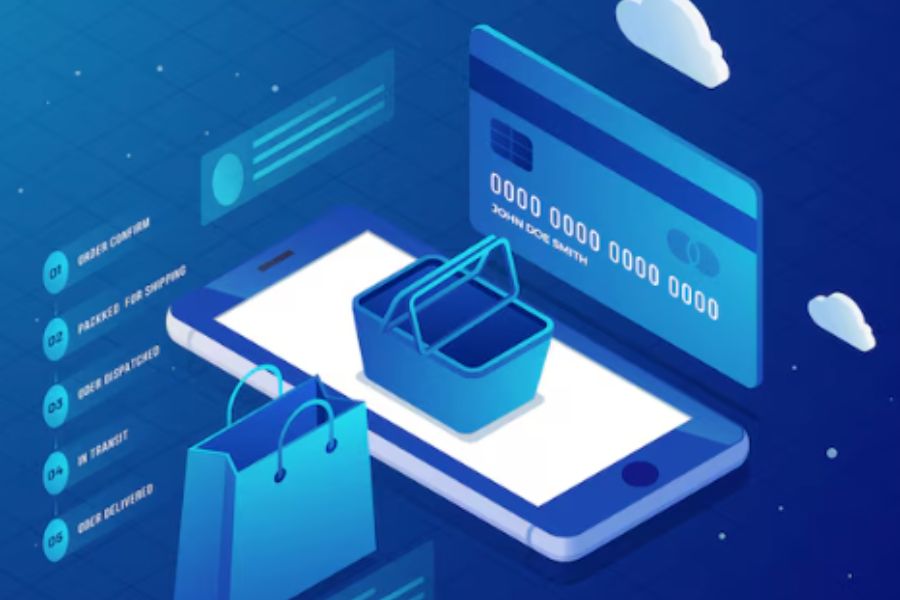If you’re running a retail business on Shopify, integrating a reliable point-of-sale (POS) system is essential for syncing online and in-store operations. From unified inventory tracking to consistent customer data and faster checkouts, the right POS integration can streamline your entire workflow. But with so many options on the market, which POS systems actually work well with Shopify?
In this article, we’ll explore the top POS systems that integrate with Shopify—including Shopify POS, Magestore POS, Square POS, Lightspeed POS, Clover POS, and ConnectPOS. We’ll break down how each one connects to Shopify, compare their core features, evaluate payment processing compatibility, and outline pricing considerations. Whether you’re a small boutique or a multi-location retailer, this guide will help you choose the best POS system to grow your business with Shopify.
What is Shopify POS Integration?
Shopify POS Integration refers to the process of connecting a point-of-sale (POS) system with the Shopify e-commerce platform to enable seamless management of sales, inventory, customer data, and orders across both online and physical retail channels.
When a POS system is integrated with Shopify, it allows retailers to:
- Synchronize inventory in real-time between their online store and physical locations, preventing overselling and stockouts.
- Process sales transactions using one system that automatically updates Shopify’s backend.
- Manage customer profiles and loyalty programs consistently across channels.
- Access unified reporting and analytics for both in-store and online sales.
- Streamline order fulfillment and returns regardless of where the purchase was made.
Shopify offers its own native POS system, called Shopify POS, which is deeply integrated with its platform. However, merchants can also connect third-party POS systems like Magestore POS, Square POS, Lightspeed POS, or ConnectPOS via integration tools or apps. These integrations vary in complexity and features, ranging from basic syncing of product catalogs to real-time, two-way synchronization of sales, inventory, and customer data.
In short, Shopify POS Integration empowers retailers to run a unified, efficient business across multiple sales channels, improving operational workflows and enhancing the customer shopping experience.
Understanding POS Integration Levels with Shopify
Integration levels refer to how tightly a POS system connects and synchronizes with Shopify’s e-commerce platform. A deeper integration means data like inventory, orders, customer profiles, and sales reports flow smoothly and in real-time between systems, reducing manual work and errors.
Basic Integration
Basic integration typically means the POS system syncs limited data with Shopify, such as product catalogs and sales orders, but may require manual updates for inventory or customer data. These systems might function well independently but won’t fully leverage Shopify’s ecosystem.
Intermediate Integration
Intermediate integrations offer more features synced between platforms, including inventory updates, customer profiles, and promotions. Sales data flows more consistently, allowing better management across channels, but some functionality, like real-time inventory updates, may still lag.
Deep (Native) Integration
Deep or native integration is the gold standard. Here, the POS system is either developed by Shopify or built to seamlessly operate within Shopify’s infrastructure. This level ensures real-time syncing of inventory, orders, customer data, and analytics. It minimizes manual tasks, optimizes the customer experience, and streamlines operations.
►►► Optimal solution set for businesses: Multi store POS, Next-gen POS, Inventory Management Software (MSI), Self Service, Automation, Backorders
General Comparison of 5 Popular Shopify POS Integrations
Below is a summary comparison of five widely used POS solutions compatible with Shopify, helping you understand their relative strengths and ideal use cases.
| POS System | Integration Level | Best For | Key Features | Payment Options | Pricing Model |
|---|---|---|---|---|---|
| Shopify POS | Deep (Native) | Seamless Shopify integration | Real-time sync, multi-channel inventory, loyalty programs | Shopify Payments, third-party gateways | Subscription + transaction fees |
| Magestore POS | Intermediate | Multiple local payment methods, flexible customization | Custom workflows, multi-language, local payments | Various regional gateways | Subscription |
| Square POS | Basic to Intermediate | Small Shopify merchants using Square Payments | Simple setup, easy payments, offline mode | Square Payments | Flat monthly + per transaction |
| Lightspeed POS | Intermediate to Deep | Comprehensive inventory management | Advanced inventory, multi-location, analytics | Multiple gateways | Subscription |
| ConnectPOS | Deep | Omnichannel retail with real-time sync | Offline mode, multi-store support, flexible pricing | Multiple gateways | Subscription |
Shopify POS: Best for Seamless Shopify Integration
Shopify POS is Shopify’s in-house point-of-sale system designed to provide a flawless connection with Shopify stores. It offers real-time synchronization of sales, inventory, and customer data between your online store and physical locations. This tight integration helps retailers avoid overselling and ensures a unified shopping experience.
Key benefits include:
- Unified inventory across channels: Instantly updates stock counts across all sales points.
- Integrated customer profiles and loyalty: Track customer purchases and reward repeat buyers easily.
- Smooth checkout experience: Supports Shopify Payments and multiple payment methods.
- Centralized reporting: View detailed sales and inventory analytics within Shopify admin.
Shopify POS is ideal for businesses fully committed to the Shopify ecosystem seeking simplicity, reliability, and scalable growth.
Magestore POS for Shopify: Best for Multiple Local Payment Integration and Flexible Customization
Magestore POS offers robust integration tailored for merchants who need customizable workflows and support for multiple local payment methods worldwide. This system suits retailers expanding internationally or those who need to adapt their POS to specific market needs.
Features include:
- Flexible customization: Customize sales flows, receipt templates, and user permissions.
- Multiple payment gateway support: Accept payments via local providers alongside major gateways.
- Multi-language and currency support: Ideal for businesses operating in diverse regions.
- Inventory and order sync: Keeps Shopify updated with offline and online transactions.
This POS is a great fit for retailers wanting more control over their operations and payment flexibility without losing Shopify integration benefits.
Square POS: Best for Small Shopify Merchants Using Square Payments
Square POS is widely popular with small businesses and independent retailers. Its integration with Shopify is straightforward but less deep compared to Shopify POS. Square is especially convenient for merchants who already use Square for payments or want a low-cost, easy-to-setup system.
Advantages of Square POS include:
- Simple onboarding and interface: Minimal setup time.
- Supports offline payments: Continue selling even without internet.
- Robust payment processing: Square Payments with transparent fees.
- Basic inventory sync: Keeps Shopify updated but with some lag.
While it lacks some advanced Shopify features, Square POS is a practical choice for startups or smaller stores focused on straightforward operations.
Lightspeed POS: Best for Comprehensive Inventory Management
Lightspeed POS is a feature-rich system designed for medium to large retailers with complex inventory needs. Its integration with Shopify supports multi-location inventory management, vendor ordering, and detailed analytics.
Core features include:
- Advanced inventory controls: Track products, variants, and stock across locations.
- Multi-channel order management: Sync online and in-store orders in near real-time.
- Detailed reporting: Insightful sales, inventory, and customer data dashboards.
- Flexible payment processing: Integrates with multiple gateways.
Lightspeed is perfect for retailers who need powerful inventory management combined with Shopify’s e-commerce platform.
ConnectPOS: Best for Omnichannel Retail with Real-Time Sync
ConnectPOS is a fast-growing Shopify POS solution known for its robust omnichannel capabilities and real-time synchronization even in complex retail environments. It supports offline mode, making it reliable for locations with unstable internet.
Key advantages:
- Real-time sync: Instant updates for orders, inventory, and customer data across online and offline sales.
- Offline mode: Continue selling without internet, with automatic data syncing once connected.
- Multi-store support: Manage multiple locations with centralized control.
- Flexible pricing plans: Scalable options based on business size and needs.
- Support for multiple payment gateways: Adapt to various regional payment processors.
ConnectPOS is ideal for retailers who want a scalable, reliable POS with strong Shopify integration and offline reliability.
Methodology
This comparison is based on comprehensive research of vendor documentation, user reviews, feature sets, and pricing structures. We focused on integration depth with Shopify, payment compatibility, hardware support, offline functionality, customization options, and pricing transparency. The goal is to help Shopify merchants choose the best POS integration to meet their unique operational requirements.
Conclusion
Choosing the right POS integration with Shopify depends heavily on your business size, sales volume, payment needs, and operational complexity.
- If you want seamless Shopify experience and deep integration, Shopify POS is the best choice.
- For flexibility with local payments and customization, Magestore POS stands out.
- Small businesses seeking simplicity and existing Square payment usage should consider Square POS.
- Larger retailers needing advanced inventory features will benefit from Lightspeed POS.
- Retailers needing strong omnichannel support with offline mode and multi-store management should explore ConnectPOS.
Understanding these integration levels and features will help you make an informed decision to streamline sales, improve inventory accuracy, and enhance your customer experience.
►►► Optimal solution set for businesses: Shopify POS, Magento POS, BigCommerce POS, WooCommerce POS, NetSuite POS, E-Commerce POS



